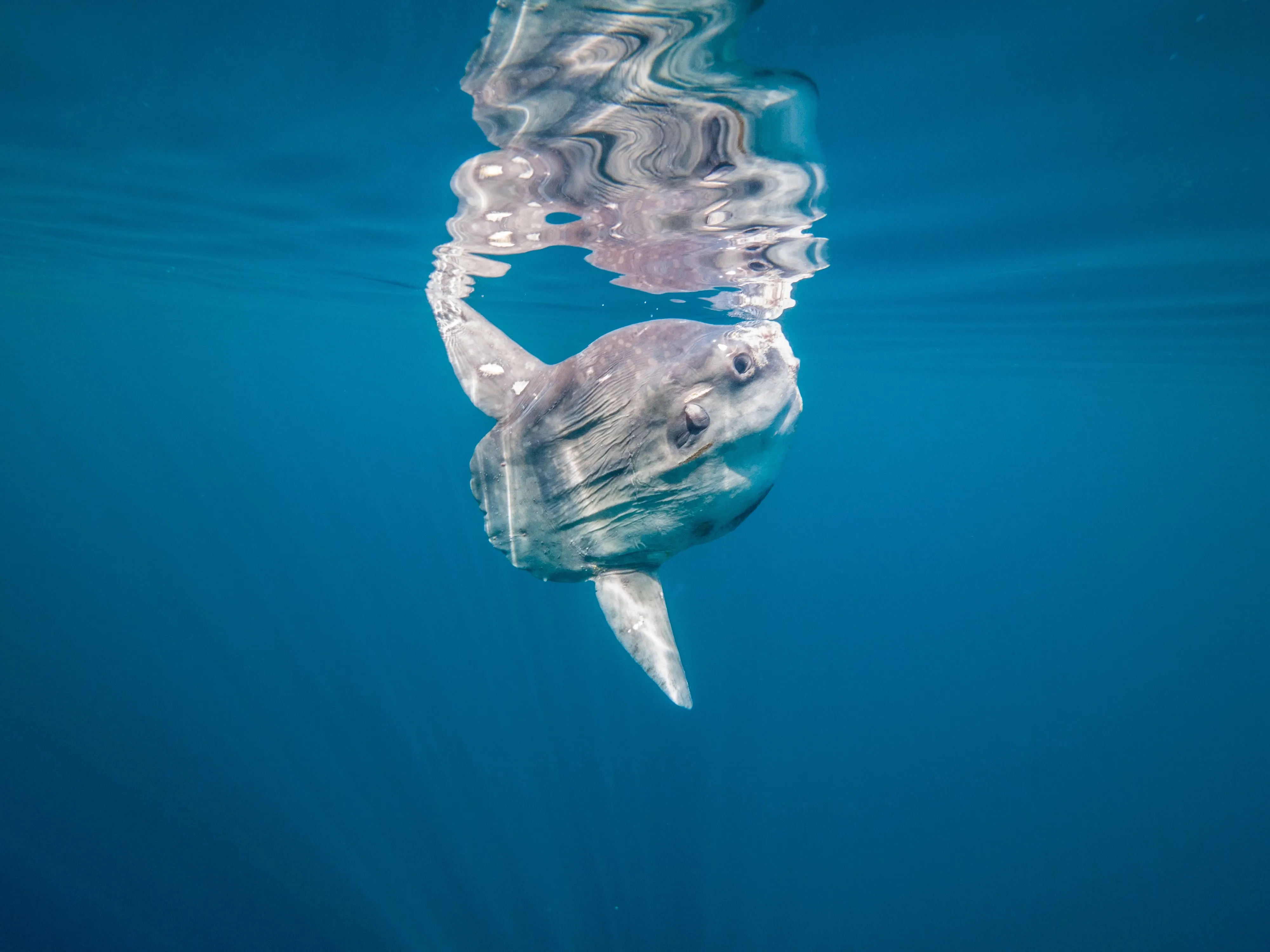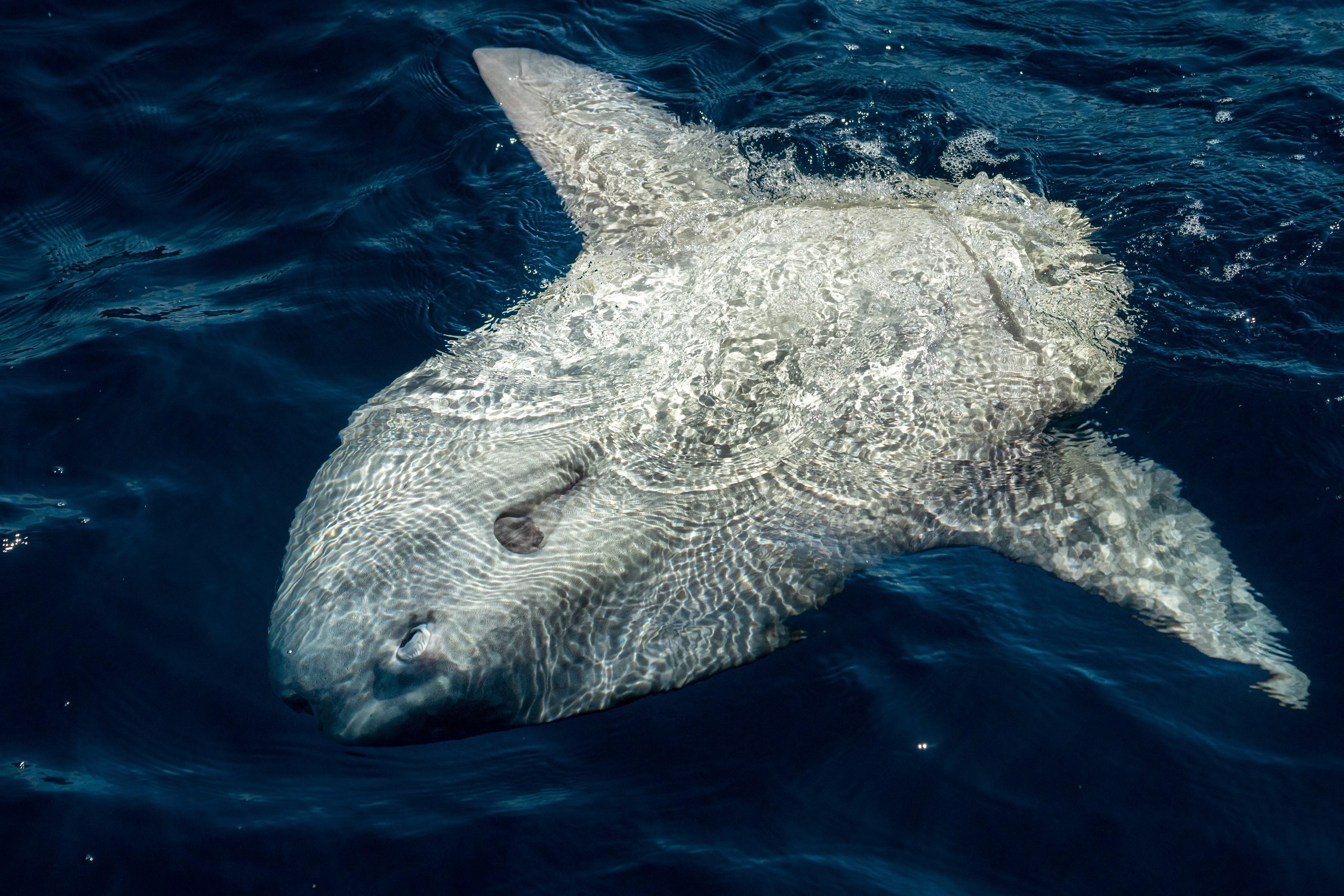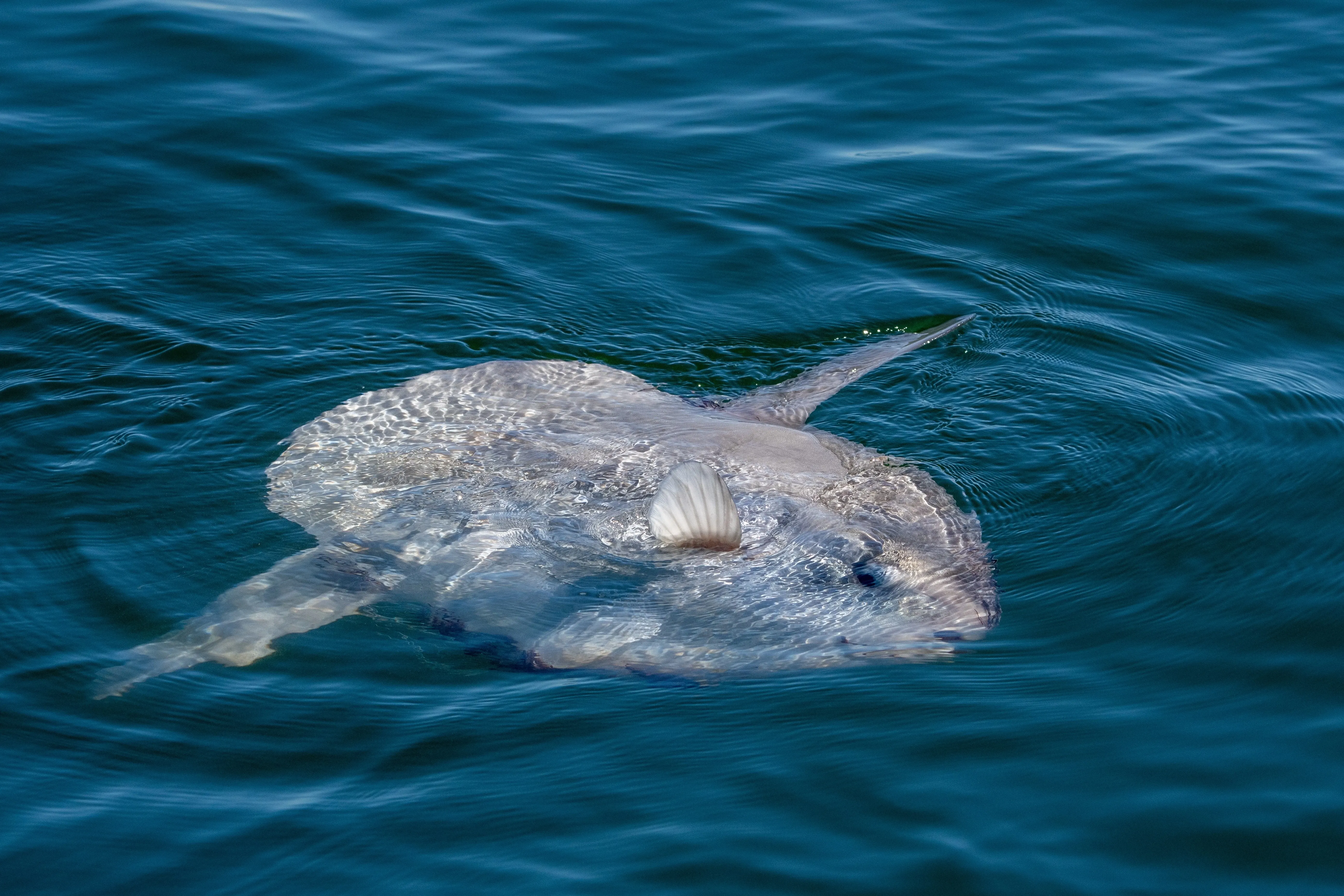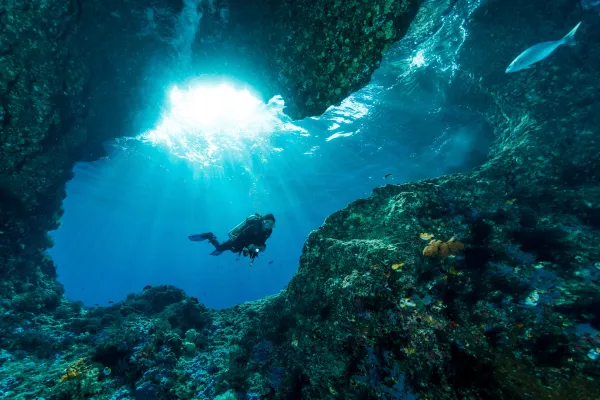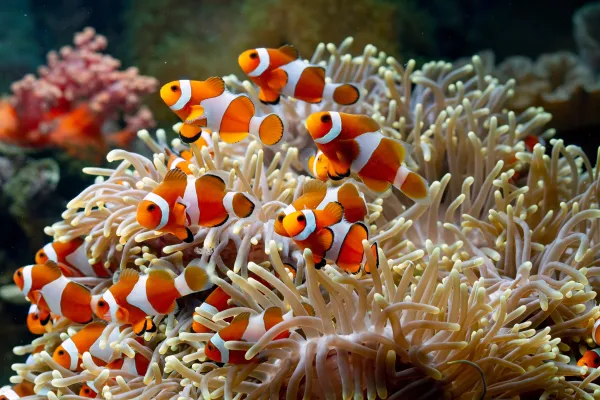The resilient sunfish - a living anomaly
The marine sunfish - or mola - may be the world’s weirdest fish. It has no tail, can barely swim, and is a sitting duck for predators and parasites. So how does this marine behemoth manage to survive?
The sea has no shortage of weird and wonderful creatures. However, the sunfish is among the strangest of its inhabitants. This massive, disc-shaped animal occurs in warm and temperate oceans across the globe. It resembles an enormous, prehistoric mix of a whale, shark, and fish chopped in half - a living anomaly.
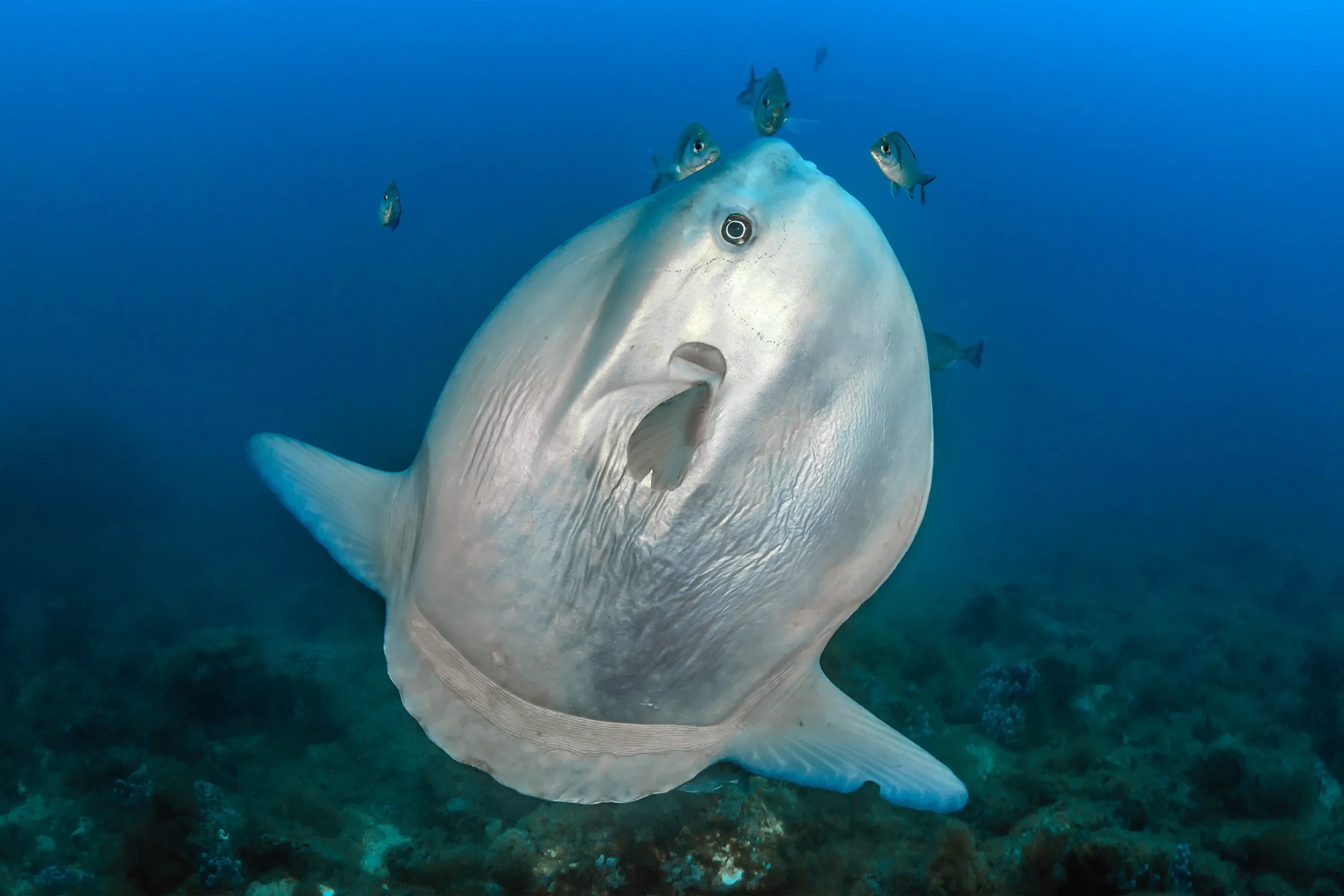
The sunfish is the world’s largest bony fish growing up to 3.3 metres long and reaching over 2000 kilograms. This silvery-white animal has dorsal fins and an anal fin but only tiny, rounded pectoral fins. Along with its immense bulk, these small appendages make the sunfish a slow and clumsy swimmer. Consequently, it is an easy target for predators such as sharks, sea lions, and orcas. Moreover, the species’ slow movement makes it vulnerable to parasite infestations.
Essentially, the sunfish is a drifting, defenseless blob that relies mainly on ocean currents to transport it. This odd vertebrate seems to be an evolutionary flop - a species that should be extinct. So how does it survive? The answer is that the sunfish has an arsenal of unique evolutionary tactics.
Interesting facts about the sunfish
- The term Mola translates to 'millstone' in Latin, a reference to the sunfish's circular shape
- Sunfish are harmless to humans and often approach divers out of curiosity.
- While sunfish may look prehistoric, they are among the youngest of the fish family in evolutionary terms.
- Scientists estimate that the world’s first fish species originated roughly 500 million years ago. However, research indicates that the sunfish has only existed for approximately 50 million years.
Natural protection from predators
Sunfish are born with a back fin, but this never develops into a typical fishtail. Neither do sunfish have axial muscles, which enable most fish to flex their bodies laterally, propelling them forward. Instead, their rear fin folds itself into what scientists call a clavus. It might seem like a physical deformity, but the clavus serves a vital purpose. It acts as a natural rudder, helping the sunfish steer its hefty weight through water.
Enlarged dorsal fins for swimming
Although sunfish do not have the pectoral fins most fish use to swim, they have enlarged dorsal fins. These huge fins are identical in size and sit above and below the animal’s body. They flap in unison, creating movement that allows water to move over the sunfish, propelling it forward. Simultaneously, the animal moves its small pectoral fins to assist it with balance. With the aid of its organic rudder - the clavus, the sunfish can move at up to three kilometres per hour. It might not win any medal for speed, but its bizarre biology facilitates slow and steady movement.
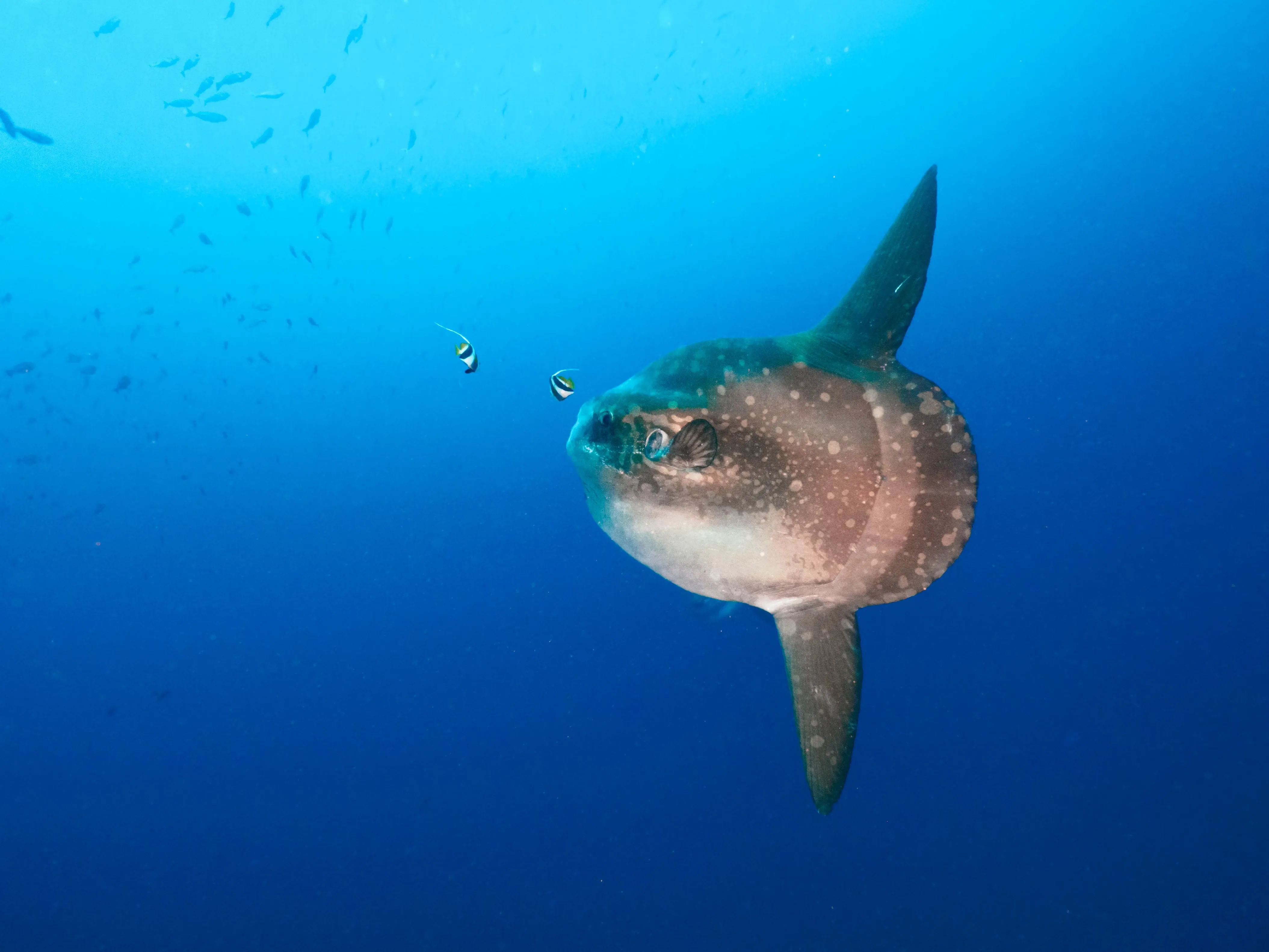
Leathery skin and a low nutritional value protection
While the sunfish may seem like an obvious and hassle-free food source for predators, this is not the case. These animals have callous, leathery skin and hard scales, making them difficult to devour. Furthermore, their huge size makes them impossible to swallow whole. And to top it off, sunfish flesh offers very little nutritional value. As a result, their natural enemies often avoid them if more convenient prey is available.
The sunfish lay millions of eggs
Most fish lay large batches of eggs. For example, beluga sturgeon lays roughly seven million eggs yearly, while bluefin tuna lays up to 30 million eggs annually. However, sunfish are unusually prolific egg producers - they can lay well over 300 million eggs in a breeding season. Recently, scientists discovered a 2.2-metre-long female sunfish carrying almost a billion eggs in various stages of development.
This enormous reproductive capacity gives the species a far better chance of survival. However, due to the vast numbers of eggs, sunfish larvae are tiny - approximately a quarter of a centimetre long. Sunfish that reach adulthood grow to over three metres long. Therefore, they increase their weight by roughly 60 million times while developing to achieve this colossal size.
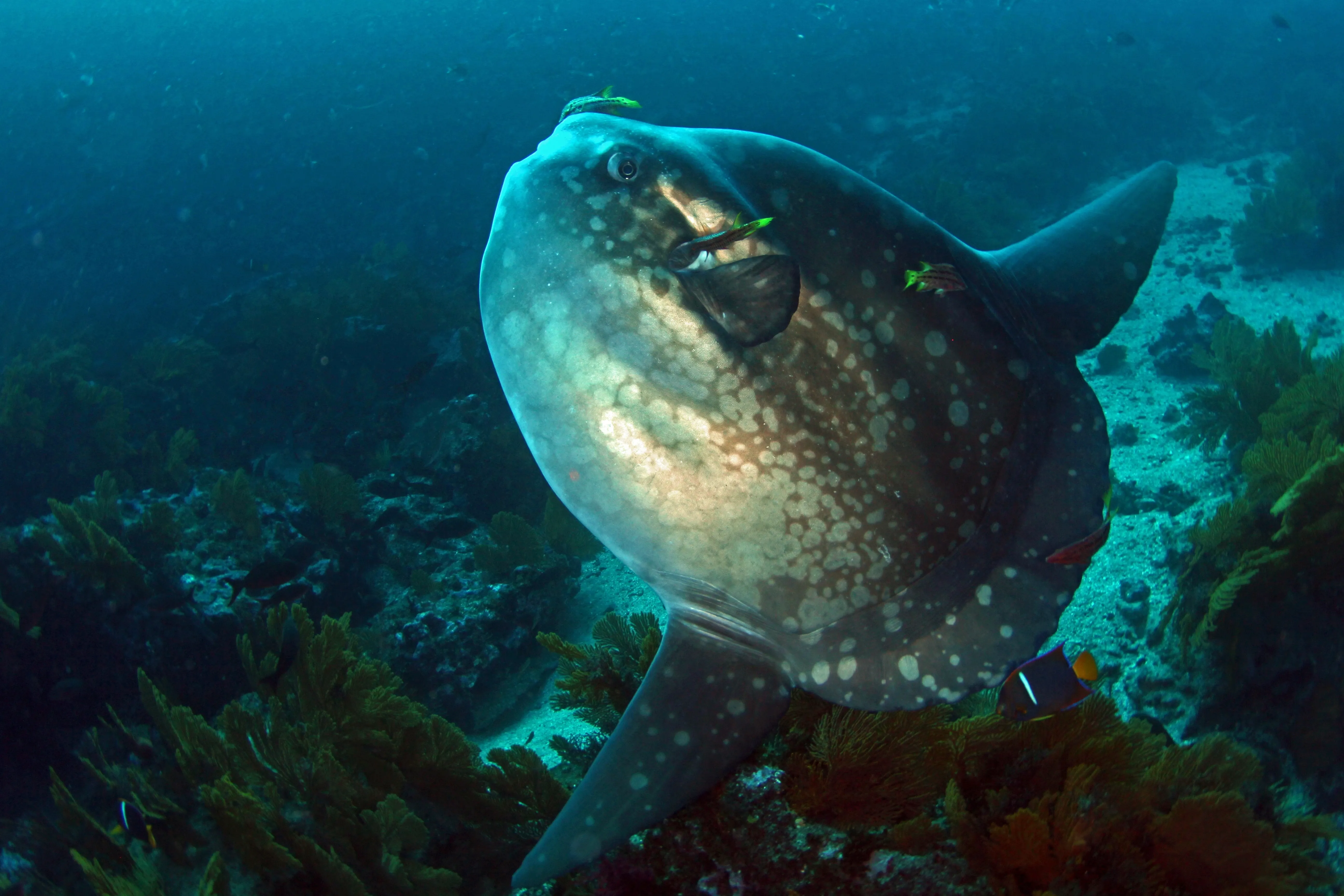
Favourite dish? Jellyfish
The sunfish sometimes feeds on plankton, small fish, and crustaceans. However, its favourite food is jellyfish, which drift slowly through the ocean, similar to the sunfish itself. Therefore, these drifting invertebrates are a relatively easy catch for the slow-moving sunfish.
Fighting parasites
Because it moves so slowly, the sunfish is prone to parasites. A recent study showed that as many as 40 parasites can affect these gentle aquatic giants simultaneously. However, sunfish have developed clever ways of dealing with this affliction:
- They often float on the ocean’s surface, so passing seagulls and other birds will pick the parasites off them.
- A covering of mucus overlays their skin, helping to repel parasites.
- They will sometimes breach above the ocean surface to shake off the parasites.
The sunfish’s unique evolutionary features have enabled it to survive for millions of years. However, the IUCN currently lists this amazing species as vulnerable. The species faces many threats, including boat collisions, fishing nets, and plastic pollution. Nevertheless, fishermen found the most enormous sunfish ever recorded off Florida’s coast in October 2022.
Unfortunately, the animal was deceased, suspectedly of colliding with a boat. It was a bumphead sunfish (Mola Alexandria) - that weighed an astounding 2744 kilograms - about the same as an SUV. The sunfish may be at risk as a species and contracted conservation efforts are critical to ensure it survives. However, this groundbreaking discovery is a testament to the incredible life that our oceans can still support.
The amazing survivor of the oceans
Despite its strange shape and apparent vulnerability, the sunfish is a true miracle of evolution. Its unique adaptations, from its unusual swimming style to its sophisticated defence mechanisms against parasites, enable it to survive in the world's oceans. However, this fascinating giant faces major challenges and is dependent on our protective measures. The discovery of the largest sunfish ever recorded reminds us of the incredible life hidden in our oceans and how important it is to preserve it.
Source references:
Monterey Bay Aquarium
Smithsonian Magazine
Sign up for the newsletter
By clicking on “Subscribe now” I will subscribe to the Conscious Explorer newsletter with all the information about mindful travel. Information on the success measurement included in the consent, the use of the shipping service provider MailChimp, logging of the registration and your rights of revocation can be found in our privacy policy.
